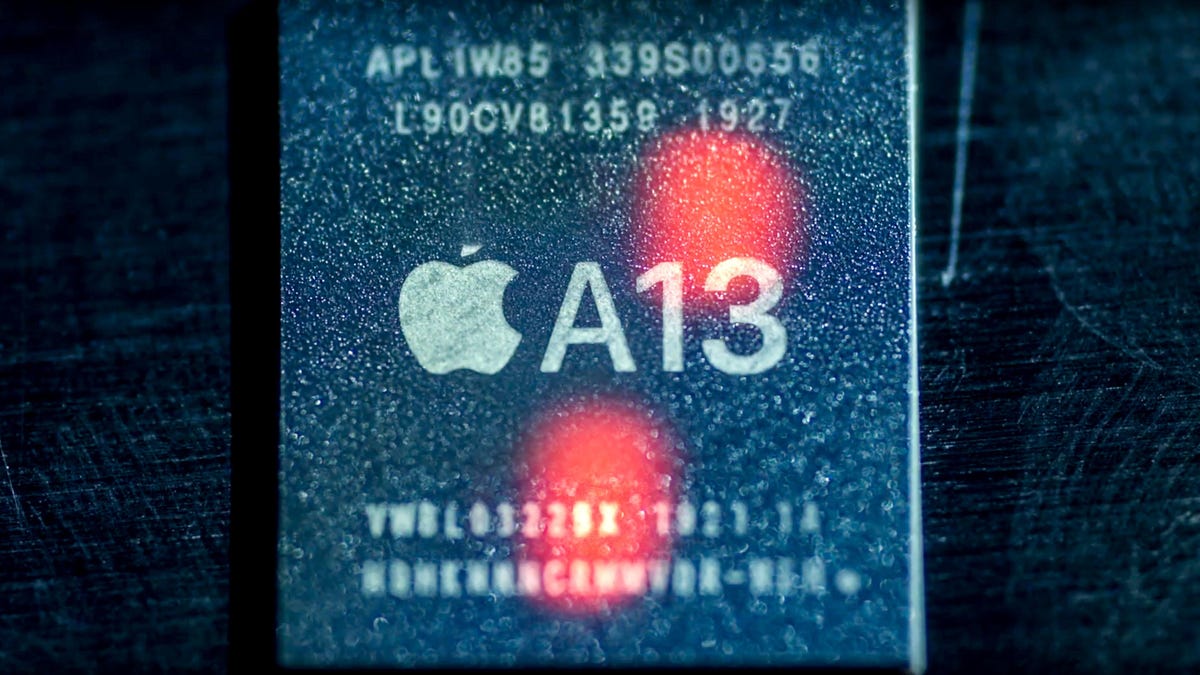Apple's iPhone 11 A13 processor boosts chip performance 20%
The new chip is built with a more power-efficient transistor technology, too, to save battery life.

Apple's A13 processor in the iPhone 11, 11 Pro, and 11 Pro Max
Apple's A13 Bionic processor will boost iPhone 11 performance by at least 20 percent over last year's smartphones , Apple said Tuesday. That includes the speed of the main processor brains and its special-purpose engines for graphics and AI.
"It is our most performant chip we have ever built for iPhone," said Sri Santhanam, vice president of silicon engineering, at Apple's annual iPhone launch event in Cupertino, California.
The new A13 processor used in Apple's iPhone 11 family of smartphones also is Apple's biggest ever, with 8.6 billion transistors, up from 6.9 billion last year. A transistor is the tiny on-off switch that's the fundamental element of processing circuitry in computer chips, and the more of them you have, the more things you can do with a chip, like speed up particular chores like game graphics and photo apps using artificial intelligence algorithms.
More from the Apple event
- iPhone 11: New wide-angle camera, 6 colors, faster Face ID for $699
- Apple iPhone 11 event photos
- See all our event coverage
The A13 processor is a foundation for Apple's technology. Apple designs the chips on its own, a move that's let it keep a sustained performance advantage over even top-end Android phones even though all smartphone chips are part of the Arm family of processors. With its own designs, Apple also can pick exactly how much silicon real estate to devote to priorities like power consumption, high-speed cache memory, AI and graphics.
"At Apple, we have the benefit of owning the entire vertical stack," Santhanam said. "We can optimize everything from the transistors to the package design," meaning how multiple chips are integrated together in a single housing.
Sri Santhanam, Apple's vice president of silicon engineering, details improvements in the iPhone 11 family's A13 processor.
In the glory days of the microprocessor industry, chips improved steadily, but progress is harder to achieve these days. Chipmakers continue to shrink transistors for smaller, more capable chips, but often new manufacturing processes don't lower costs anymore.
Apple relies on Taiwan Semiconductor Manufacturing Corp. to build its chips. Despite the chip industry difficulties, TSMC remains bullish about new techniques to improve chips, including miniaturization and a tighter coupling of memory for a performance boost.
Last year's Apple A12, which powers the iPhone XS, XR and XS Max, was the first to be built with TSMC's 7-nanometer manufacturing process. That measurement of chip feature size is remarkably small: a virus can be about 50nm wide, and a water molecuile is a quarter nanometer.
Sri Santhanam, vice president of silicon engineering, shows off Apple's new A13 smartphone chip.
Apple's A13 uses a second-generation 7nm manufacturing process that's more power-efficient, Santhanam said.
And along with the main processor, the A13 has four smaller, low-power processors that can handle background tasks without slamming the iPhone 11 battery. "We're able to reduce the power usage of all our engines up to 40%," he said.
The chips are used in iPhones, iPads and Apple TV devices. Persistent but unconfirmed reports suggest Apple will use Arm chips in future Macs, too.
First published 11:44 a.m. PT.
Update, 12:14 p.m. PT: Adds more detail.

